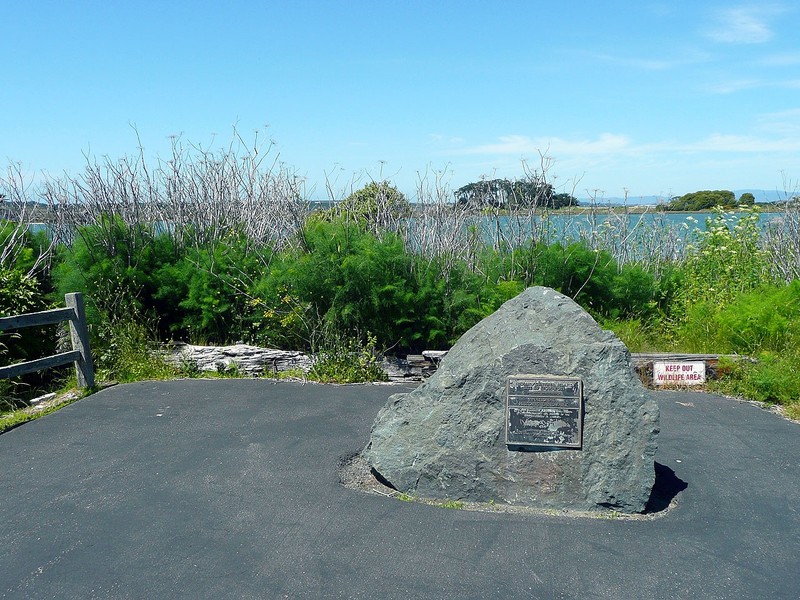Wiyot Indian Massacre of 1860
Introduction
Text-to-speech Audio
Images
The historical marker is located at the end of the road on the west end of Woodley Island. Indian Island is visible in the background.

Backstory and Context
Text-to-speech Audio
Settlers started to arrive in the area in early 1850 after an expedition led by explorer and botanist Josiah Gregg located Humboldt Bay. The bay provided a safe harbor for ships and it was near the gold mines situated along the Trinity River. Gold was found in Califonia just two years earlier and as a result, thousands of prospectors flocked to the state and eventually made their way to present-day Eureka.
Tension between the Wiyot (and other tribes) and the settlers rose in the decade before the massacre. According to one author, the settlers felt completely entitled to seize whatever they saw fit. As soon as they arrived, the settlers, with a sense of entitlement, seized land without regard to the Indians already there. They took over and widened Indian trails that led to mines, let their cattle graze in prairies (these were traditional hunting grounds), and over exploited the fish and game for food. The settlers also murdered Indians and, according to newspaper reports at the time, even kidnapped children to sell them as slaves. For their part, the Indians did resist. They sometimes killed the cattle (for food) that wandered onto their land and took up arms—using guns they acquired—against the settlers and killed a number of them as well.
The years of hostility culminated in the attack on Indian Island and the other settlements. The Wiyot had just finished a weeklong annual ceremony and the men were away collecting supplies (it is not clear whether the attackers knew this). The identities of the men were apparently known; however, they were never charged. The Wiyot were relocated to Fort Humboldt—where many died of hunger, disease, or exposure—and then to reservations. Despite decades of struggle and, for a time, losing their official status as a tribe, the Wiyot remained resilient and never forgot the story of the massacre.
Cite This Entry
M., Ben. "Wiyot Indian Massacre of 1860." Clio: Your Guide to History. October 6, 2019. Accessed August 13, 2025. https://theclio.com/entry/86160
Sources
"History." Wiyot Tribe. Accessed October 6, 2019. http://www.wiyot.us/148/Cultural.
Kowinski, William S. "In 1860 six murderers nearly wiped out the Wiyot Indian tribe -- in 2004 its members have found ways to heal." SFGate. February 28, 2004. https://www.sfgate.com/entertainment/article/In-1860-six-murderers-nearly-wiped-out-the-Wiyot-2816476.php.
Rhode, Jerry. "Genocide and Extortion: 150 years later, the hidden motive behind the Indian Island Massacre." North Coast Journal of Politics, People & Art. February 25, 2010. https://www.northcoastjournal.com/humboldt/genocide-and-extortion/Content?oid=2130748.
The Historical Marker Database

